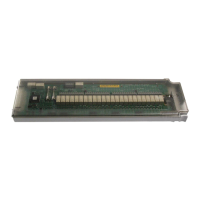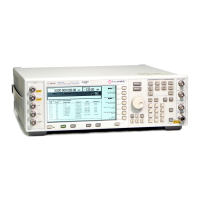174 Chapter 4
Downloading and Using Files
Downloading User File Data
Downloading User File Data
The signal generator accepts user file data downloads. The files can be in either binary or bit format, each
consisting of 8-bit bytes. Both file types are stored in the signal generator’s non-volatile memory.
• In binary format the data is in multiples of 8 bits; all 8 bits of a byte are taken as data and used.
• In bit format the number of bits in the file is known and the non-data bits in the last byte are discarded.
After downloading the files, they can be selected as the transmitting data source. This section contains
information on transferring user file data from a PC to the signal generator. It explains how to download user
files into the signal generator’s memory and modulate the carrier signal with those files.
When a file is selected for use in Real-time Custom mode, the file is modulated as a continuous, unframed
stream of data, according to the modulation type, symbol rate, and filtering associated with the selected
format.
When a user file is selected as the data source, the signal generator’s firmware loads the data into waveform
memory, and sets the other control bits depending on the operating mode, regardless of whether framed or
unframed transmission is selected. In this manner, user files are mapped into waveform memory bit-by-bit;
one bit per 32 bit control word.
NOTE Unlike pattern RAM (PRAM) downloads (see page 182), user files contain “data field”
information only. The control data bits required for files downloaded directly into PRAM
are not required for user file data.
NOTE References to pattern RAM (PRAM) are for descriptive purposes only, relating to the
manner in which the memory is being used. PRAM and volatile waveform memory
(WFM1) actually utilize the same storage media.
